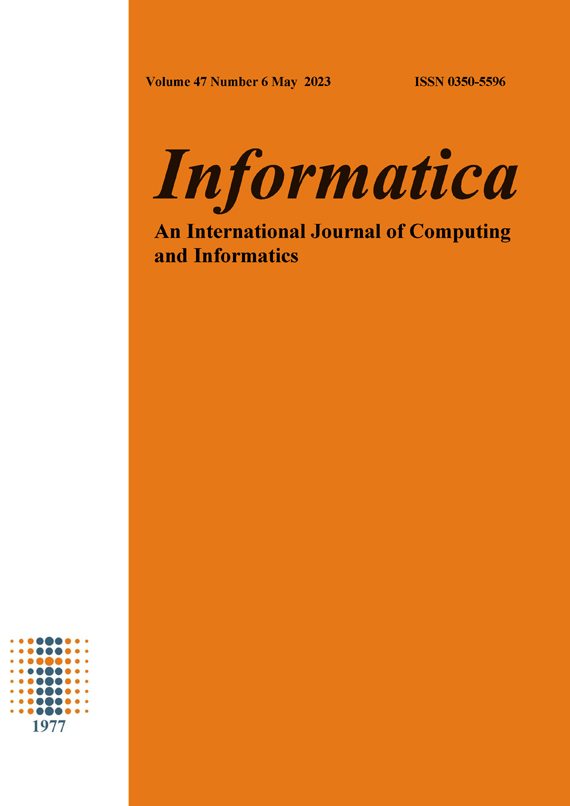ASM-based Formal Model for Analysing Cloud Auto-Scaling Mechanisms
DOI:
https://doi.org/10.31449/inf.v47i6.4622Abstract
The provision of resources to meet workloads demands has become a crucial responsibility for auto-scaling mechanisms (auto-scalers) on cloud infrastructures. However, implementing auto-scaling mechanisms on cloud frameworks has generated many technical challenges. A typical challenge is that, these auto-scalers are often designed on different cloud systems making their evaluation, comparisons and wider applicability problematic. We propose an Abstract State Machine (ASM) model to address this problem. Our ASM model was developed systematically according to the behaviours of several auto-scalers, covering the necessary system processes. Our model was checked and validated with the CoreASM Model Checker. The validation and evaluation proves that our model can be used to analyse auto-scaling mechanisms, even without conducting real-life experiments. Our model, therefore, provides the platform to evaluate the behaviours of algorithms executed on clouds.References
N. Herbst, S. Kounev, and R. Reussner (2013). Elasticity in cloud computing: What it is, and what it is not. In Proceedings of the 10th International Conference on Autonomic Computing (ICAC 13) pp. 23–27, 2013.
M. A. Netto, C. Cardonha, R. L. Cunha, and M. D. Assun¸cao (2014). Evaluating auto-scaling strategies for cloud computing environments, In 2014 IEEE 22nd International Symposium on Modelling, Analysis and Simulation of Computer and Telecommunication Systems. IEEE pp. 187–196.
T. Lorido-Botran, J. Miguel-Alonso, and J. A. Lozano (2014). A review of auto-scaling techniques for elastic applications in cloud environments. Journal of grid computing, vol. 12, no. 4, pp. 559–592.
Y. Gurevich (1993) Evolving algebras: an attempt to discover semantics.
N. Roy, A. Dubey, and A. Gokhale (2011). Efficient autoscaling in the cloud using predictive models for workload forecasting. In 2011 IEEE 4th International Conference on Cloud Computing, IEEE, pp. 500–507.
C. Qu, R. N. Calheiros, and R. Buyya (2018). Auto-scaling web applications in clouds: A taxonomy and survey. ACM Computing Surveys (CSUR), vol. 51, no. 4, pp. 1–33.
J. Yang, C. Liu, Y. Shang, Z. Mao, and J. Chen (2013). Workload predicting-based automatic scaling in service clouds. In 2013 IEEE Sixth International Conference on Cloud Computing, IEEE, pp. 810–815.
E. B¨orger (2010). The abstract state machines method for high-level system design and analysis. In Formal Methods: State of the Art and New Directions, Springer, 2010, pp. 79–116.
P. Arcaini, R.-M. Holom, and E. Riccobene (2016). Asm-based formal design of an adaptivity component for a cloud system. Formal Aspects of Computing, vol. 28, no. 4, pp. 567– 595.
G. Kecskemeti (2015). Dissect-cf: a simulator to foster energy-aware scheduling in infrastructure clouds. Simulation Modelling Practice and Theory, vol. 58, pp. 188–218.
H. Ghanbari, B. Simmons, M. Litoiu, C. Barna, and G. Iszlai (2012). Optimal autoscaling in a iaas cloud. In Proceedings of the 9th international conference on Autonomic computing. ACM, pp. 173–178.
A. Gandhi, P. Dube, A. Karve, A. Kochut, and L. Zhang (2014). Adaptive, model-driven autoscaling for cloud applications. In 11th International Conference on Autonomic Computing ({ICAC} 14), pp. 57–64.
D. Saxena and A. K. Singh (2021). A proactive autoscaling and energy-efficient vm allocation framework using online multi-resource neural network for cloud data center. Neurocomputing, vol. 426, pp. 248–264.
A. Al-Dulaimy, J. Taheri, A. Kassler, M. R. H. Farahabady, S. Deng, and A. Zomaya (2020). Multiscaler: A multi-loop auto-scaling approach for cloud-based applications. IEEE Transactions on Cloud Computing.
Q. Z. Ullah, G. M. Khan, and S. Hassan (2020). Cloud infrastructure estimation and auto-scaling using recurrent cartesian genetic programming-based ann. IEEE Access, vol. 8, pp. 17 965–17 985.
T. LakshmiPriya and R. Parthasarathi, “An asm model for an autonomous network infrastructure grid,” in International Conference on Networking and Services (ICNS’07). IEEE, 2007, pp. 29–29.
A. Bianchi, L. Manelli, and S. Pizzutilo (2011), A distributed abstract state machine for grid systems: A preliminary study. In Proceedings of the Second International Conference on Parallel, Distributed, Grid And Cloud Computing For Engineering, Civil Comp Press, Ajaccio, France, Paper, vol. 84.
A. Bianchi, L. Manelli, and S. Pizzutilo (2013). An asm-based model for grid job management. Informatica, vol. 37, no. 3, 2013.
P. Arcaini, R.-M. Holom, and E. Riccobene (2016), Asm-based formal design of an adaptivity component for a cloud system, Formal Aspects of Computing, vol. 28, no. 4, pp. 567– 595.
E. B¨orger (2003). The asm refinement method. Formal aspects of computing, vol. 15 (2-3): pp. 237–257. https://doi.org/10.1007/s00165-003-0012-7
J. Fitzgerald and P. Larsen (2009). Modelling systems: practical tools and techniques in software development, Cambridge University Press
Downloads
Published
Issue
Section
License
I assign to Informatica, An International Journal of Computing and Informatics ("Journal") the copyright in the manuscript identified above and any additional material (figures, tables, illustrations, software or other information intended for publication) submitted as part of or as a supplement to the manuscript ("Paper") in all forms and media throughout the world, in all languages, for the full term of copyright, effective when and if the article is accepted for publication. This transfer includes the right to reproduce and/or to distribute the Paper to other journals or digital libraries in electronic and online forms and systems.
I understand that I retain the rights to use the pre-prints, off-prints, accepted manuscript and published journal Paper for personal use, scholarly purposes and internal institutional use.
In certain cases, I can ask for retaining the publishing rights of the Paper. The Journal can permit or deny the request for publishing rights, to which I fully agree.
I declare that the submitted Paper is original, has been written by the stated authors and has not been published elsewhere nor is currently being considered for publication by any other journal and will not be submitted for such review while under review by this Journal. The Paper contains no material that violates proprietary rights of any other person or entity. I have obtained written permission from copyright owners for any excerpts from copyrighted works that are included and have credited the sources in my article. I have informed the co-author(s) of the terms of this publishing agreement.
Copyright © Slovenian Society Informatika








